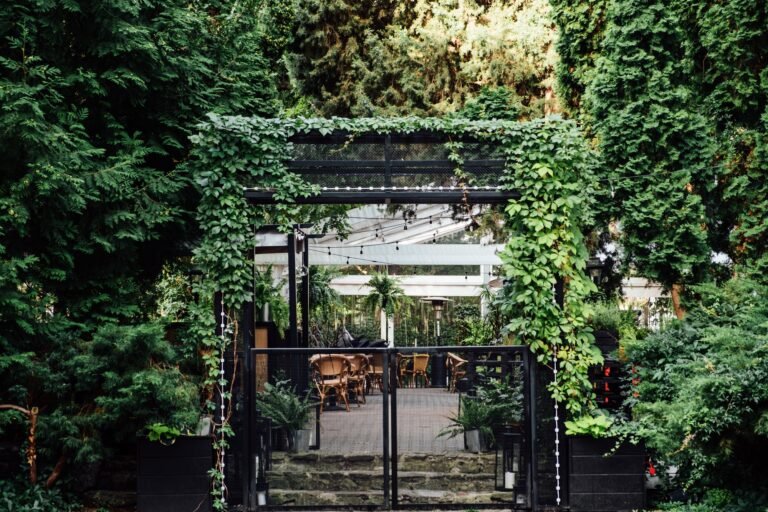At SBD, we believe that every built environment—whether it’s an office, home, hospital, or public plaza—should nurture our innate bond with the natural world. That’s the essence of biophilic design: the practice of integrating nature’s patterns, processes, and forms into modern buildings and urban landscapes to support our physical and mental well-being.
Why Biophilic Design Matters
Human beings spent more than 99% of our evolutionary history responding directly to forests, rivers, and natural terrain—not the concrete and glass of today’s cities. As a result, we’re biologically wired to seek out connections with living systems: greenery, fresh air, natural light, flowing water, and the textures and colors of organic materials.
Yet today we spend upward of 90% of our time indoors, often in artificial environments that fail to address these ancient needs. Biophilic design doesn’t treat nature as an optional “nice-to-have” amenity or a purely aesthetic flourish. Instead, it creates holistic habitats—integrated ecosystems of design interventions that promote health, productivity, and emotional engagement.
Five Pillars of Effective Biophilic Design
- Evolutionary Relevance
Focus on those natural features and processes that historically advanced our survival and fitness. For example, patterned light and shadow, fresh air circulation, and verdant views all mirror environments where our species thrived. Exotic or obscure references—deep-sea creatures, alien landscapes, or extinct flora—may be interesting, but they don’t deliver the sustained wellness benefits rooted in our evolutionary past. - Sustained Engagement
Biophilia is a “weak” rather than “hard-wired” tendency—it must be learned, experienced, and reinforced over time. Occasional plant displays or one-off green walls are better than nothing, but the true power of biophilic design comes from ongoing, repeated contact with nature: daily daylight cycles, seasonal planting rotations, flowing water features you pass each day. - Integrated Habitat
Just as healthy ecosystems depend on the seamless interaction of soil, water, plants, and animals, biophilic design interventions must connect and complement the overall environment. An isolated potted plant in an otherwise sterile office has minimal impact. A network of living walls, daylight-optimized layouts, natural ventilation paths, and landscape corridors, however, creates an immersive, supportive habitat. - Emotional Attachment
When spaces satisfy our inborn drive to affiliate with nature, they foster emotional bonds—places we love, identify with, and wish to protect. At SBD, we craft environments that people feel drawn to: tranquil garden courtyards in corporate campuses, daylight-filled atria in healthcare facilities, and cozy, plant-lined lounges in residential towers. - Social and Environmental Connection
Humans thrive through relationships—both with each other and with our surroundings. Effective biophilic design enhances social cohesion by creating shared natural destinations (think communal rooftop terraces with native plantings) and strengthens our sense of belonging to a larger ecological community.
Overcoming the “Nature Deficit” in Modern Design
In recent decades, our built environments have become increasingly insulated from the living world. Many contemporary buildings—from schools and hospitals to corporate offices and shopping malls—prioritize efficiency, cost-cutting, and uniformity over sensory richness. The result is often a “nature deficit” that harms occupants’ physical and mental health in subtle but measurable ways.
Sensory Deprivation and Its Consequences
When daylight is blocked by deep floor plates or sealed glazing, our circadian rhythms falter. Artificial HVAC systems, while controlling temperature, eliminate the ever-changing air currents and olfactory cues that once signaled weather, seasons, and environmental shifts. Sterile materials—vinyl floors, painted concrete, fluorescent lighting—provide little in the way of tactile or visual warmth. Over time, these deficits contribute to chronic fatigue, stress hormone imbalances, reduced cognitive performance, and even slower healing in medical settings.
Beyond the Potted Plant
It’s tempting to think a few strategically placed houseplants or a single green wall will solve these problems—but isolated gestures often ring hollow if they aren’t part of a broader ecological narrative. A lone fern in a windowless lobby may catch the eye, but it won’t restore lost daylight gradients, improve indoor air chemistry in a meaningful way, or create emotional attachment. True biophilic design takes a systems-thinking approach, weaving nature’s elements throughout the building’s DNA.
Proven Benefits of Integrated Strategies
Numerous studies confirm that when environments reintroduce key natural stimuli—dynamic daylighting, fresh-air ventilation, natural materials, multisensory water features, and views to green spaces—occupant well-being soars. In healthcare, patients in rooms with ample daylight and garden views recover faster and require less pain medication. In offices, employees in biophilic settings report up to a 15% increase in creativity and a 6% boost in cognitive function. Even retail spaces with natural light and greenery see higher customer dwell times and spending.
Design Interventions That Work
- Daylight Optimization: Use atria, light shelves, and clerestory windows to channel natural light deep into interiors.
- Operable Façades: Incorporate windows or vents that provide seasonal fresh-air exchange, reconnecting occupants to local climate cues.
- Embedded Green Networks: Design continuous green corridors—vertical gardens, planted skylights, roof terraces—that link interior and exterior landscapes.
- Natural Materiality: Specify wood, stone, clay, and other tactile surfaces whose grain, texture, and temperature invite touch and offer authenticity.
-
- Ecological Assessment: Understand the local climate, native species, daylight patterns, and water cycles.
-
- Holistic Integration: Map how daylight, ventilation, vegetation, water features, and material choices will interconnect.
-
- User Engagement: Design for repeat experiences—garden paths people traverse daily, seasonal plant rotations, interactive water elements.
-
- Collaborative Expertise: Partner with landscape architects, ecologists, engineers, and neuroscientists to ensure every intervention supports both habitat health and human well-being.
By confronting the nature deficit head-on, SBD International transforms sterile, impersonal spaces into dynamic, living habitats—where people feel energized by daylight, soothed by natural sounds, and inspired by the textures and patterns of the natural world.
Bringing Biophilic Design to Your Next Project
Implementing true biophilic design means more than tossing in a few plants. It starts with:
At SBD we’re passionate about crafting spaces where people not only live and work—but thrive—thanks to our intrinsic connection with nature. Ready to transform your next project into a living, breathing habitat? Let’s talk.






